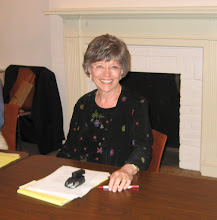Saturday, February 27, 2010
Shotakovitch
Omigosh. We went to hear Shostakovitch’s 11th symphony yesterday. What a treat! Who knew that one could combine harps with percussion and make it all work. Brass, winds, drums, 2 harps, violas, violins, gongs, cymbals and actually some instruments that I did not even recognize came together to produce a symphonic performance that got the orchestra FOUR ovations. It was breathtaking. I have an attraction to some of the broodier (is that a word?) and more complex composers – Berlioz being my favorite followed probably by Shostakovitch. I suspect that complexity is in the eyes of the beholder in that Beethoven is very complex, but being an amateur and not a musician, I don’t have the musical sophistication to analyze. I just know what these composers do to my soul. Plus, I never grew up with classical music and did not even start developing that part of myself until I was well into my twenties. So – on to my impressions, amateurish though they may be. Dmitri Shostakovitch, much harassed by the Soviet state, manages to communicate a melancholic depth and profound sense of anguish in many of his symphonies, concertos, and quartets. He seems overly ambitious at times, but I suspect that what appears to be pretentiousness is actually a subtle satire of the Soviet state and its blustering bombastic swagger through history. Shostakovitch’s genius was that he could subtly thumb his nose at the Soviet censors and often (not always) they were too stupid to see it. The 11th symphony is a large-scale tribute to the "victory" of the Great October Revolution of 1917, composed on the 40th anniversary of the occasion. The mass demonstration of 1905 ended in the brutal slaughter of thousands of peaceful peasants and workers rising against the rule of Nicholas II. The minor key pervades. The first of the four movements is called "The Palace Square," setting the somber scene where the violent events of the day would occur. Shostakovitch includes two Russian prison songs in this movement. The second movement, "January 9th," pictures the workers' march through the streets and their slaughter. "Eternal Memory" is the title of the third movement, a pensive requiem, and in the last movement, "Alarm," the spirit of revolt returns, with militant songs and a triumphant, percussive finale. Bravo/brava Philadelphia Orchestra!
Subscribe to:
Post Comments (Atom)

No comments:
Post a Comment